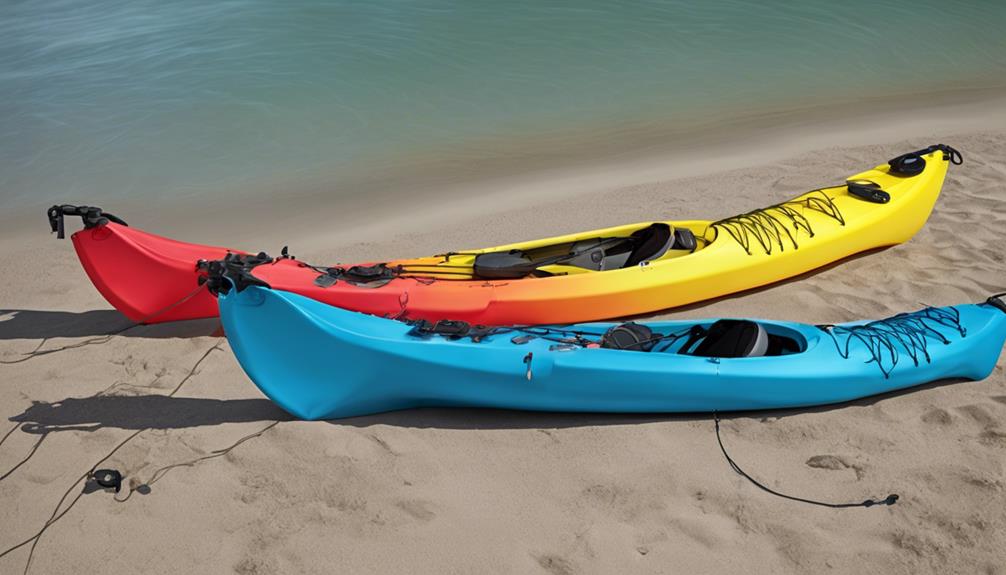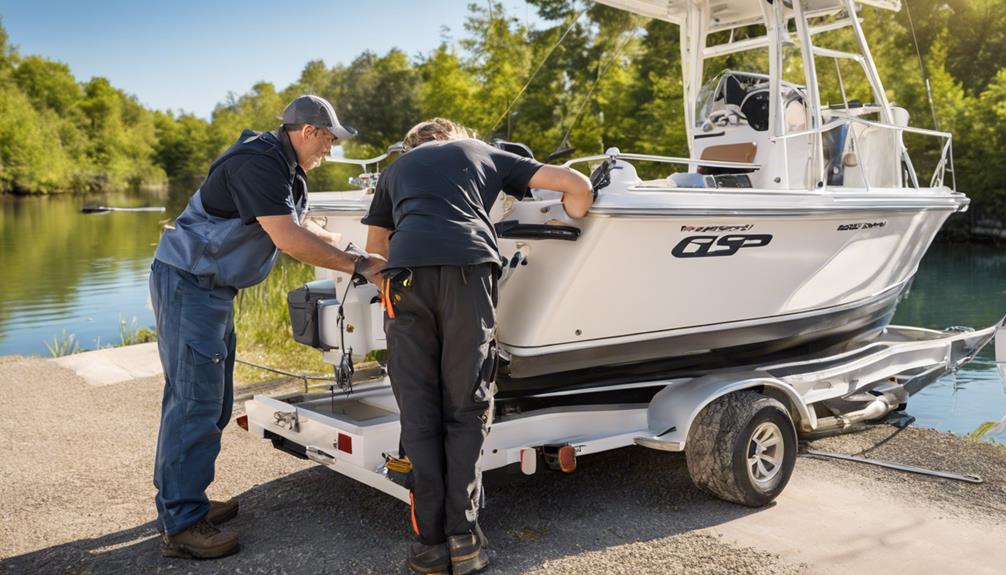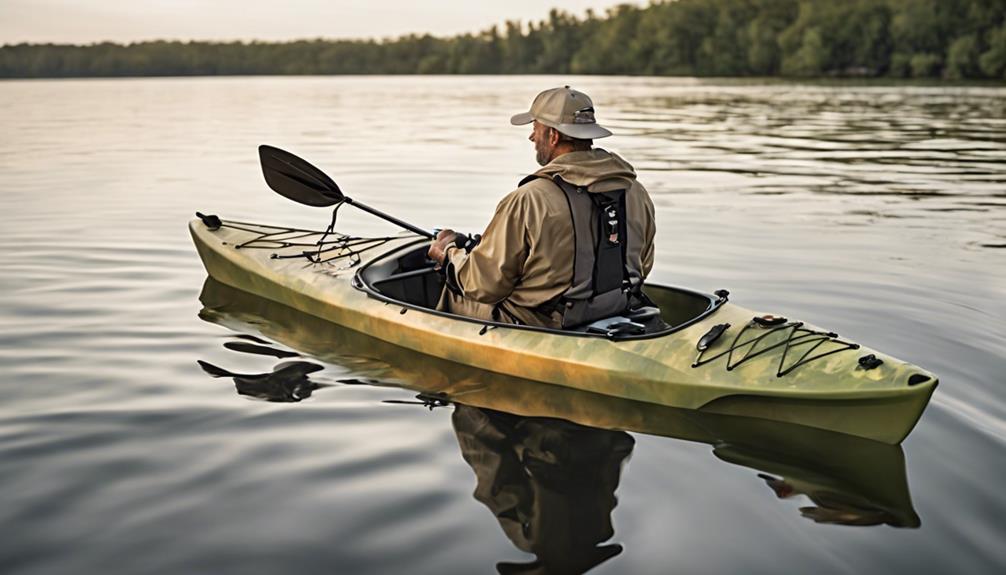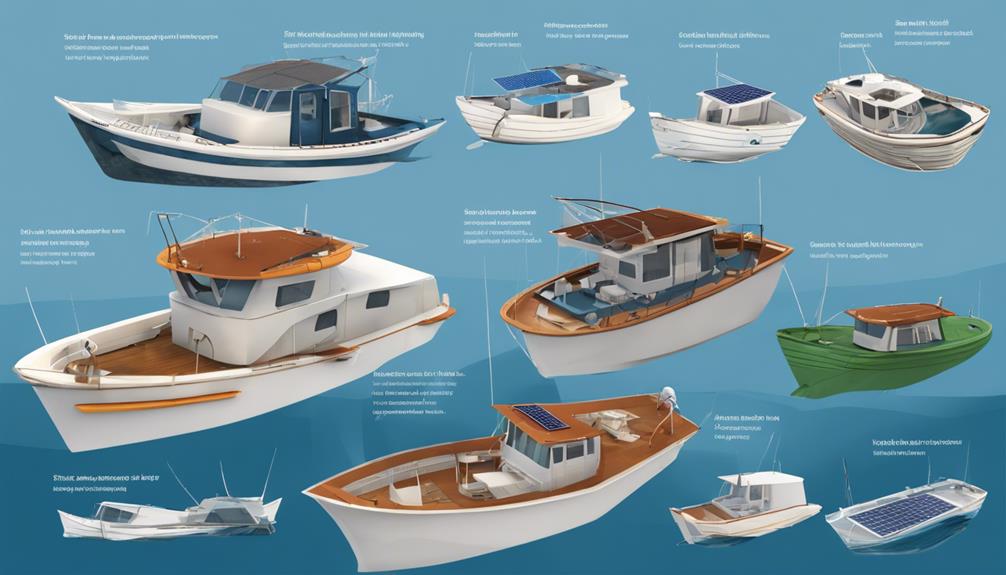So, you've decided to brave the open waters on your trusty fishing kayak, but have you equipped yourself with the essential safety gear yet?
When it comes to ensuring your safety while out on the water, there are five key pieces of equipment that you simply cannot afford to overlook. From personal flotation devices that could be a lifesaver to signaling lights that can alert others to your presence, these items are crucial for any angler venturing into the depths.
But what about the other must-have safety gear for your fishing kayak?
Personal Flotation Devices (PFDs)
Make sure you have your personal flotation device (PFD) securely fastened before setting out on your fishing kayak adventure. Your safety on the water is crucial, and a properly maintained PFD can be a lifesaver in case of an emergency. Regular PFD maintenance is essential to ensure it functions correctly when needed most. Check for any tears, rips, or damage to the PFD, and make sure all buckles and zippers are in good working condition. Additionally, be sure to rinse your PFD with fresh water after each use to prevent salt or debris buildup that could affect its buoyancy.
When it comes to PFD sizing, it's vital to choose one that fits you properly. PFDs come in various sizes, so make sure to select one that's appropriate for your weight range and chest size. Wearing a PFD that's too large could slip off in the water, while one that's too small may be uncomfortable and restrict your movements. Try on different PFDs to find the one that feels snug and secure without being too tight. Remember, wearing a PFD that fits correctly is key to staying safe while enjoying your fishing kayak adventure.
Emergency Whistles
Before you head out on your fishing kayak adventure, ensure your safety gear includes an emergency whistle for signaling distress in case of need. Emergency whistles are essential safety tools that can be a lifesaver in emergencies. The benefits of carrying an emergency whistle include its loud sound that can travel over long distances, alerting nearby boats or individuals to your location. In situations where visibility is limited, the whistle's sound can be crucial for attracting attention and signaling for help.
To ensure your emergency whistle is effective when you need it most, proper maintenance is key. Regularly check your whistle for any signs of wear and tear, such as cracks or clogs, which can affect its functionality. It's important to clean your whistle periodically with mild soap and water to remove any dirt or debris that may have accumulated inside. Additionally, make sure the whistle's pea (the small ball inside that vibrates to produce sound) is intact and moves freely. Testing your whistle before each outing is a good practice to ensure it's in working condition.
Signaling Lights
Consider adding signaling lights to your fishing kayak safety equipment for enhanced visibility in low light conditions. When out on the water during dusk or nightfall, having signaling lights on your kayak can significantly improve your night visibility, making it easier for other boaters to spot you. Not only does this enhance your safety on the water, but it also helps you comply with safety regulations that often require watercraft to have proper lighting when operating in low light conditions.
Signal lights are crucial for emergency communication and rescue procedures. In case of an emergency situation where you need to signal for help, having these lights can make a huge difference. Whether it's alerting nearby vessels to your presence or guiding rescue teams to your location, signaling lights play a vital role in ensuring your safety on the water.
When selecting signaling lights for your fishing kayak, opt for high-quality, waterproof options that are durable and long-lasting. LED lights are a popular choice due to their brightness and energy efficiency. Additionally, consider lights that offer different flashing modes to attract attention more effectively in emergency situations.
Prioritize your safety on the water by investing in signaling lights for your fishing kayak. Not only do they enhance your visibility during low light conditions, but they also play a crucial role in emergency scenarios, aligning with safety regulations and rescue procedures.
Bilge Pump
Enhance your fishing kayak safety by ensuring you have a reliable bilge pump onboard for effective water drainage. A bilge pump is a crucial piece of equipment that helps keep your kayak afloat by removing excess water that may enter the vessel. When it comes to water drainage and emergency response scenarios, having a bilge pump can make a significant difference in ensuring your safety while out on the water.
Here are five reasons why a bilge pump is essential for your fishing kayak:
- Prevents Accumulation of Water: A bilge pump actively removes water from your kayak, preventing it from accumulating and affecting the stability of your craft.
- Aids in Emergency Situations: In case of a leak or capsizing, a bilge pump can quickly remove water, helping you stay afloat and stabilize your kayak for a safer rescue.
- Maintains Buoyancy: By expelling water efficiently, the bilge pump helps maintain the buoyancy of your kayak, reducing the risk of sinking.
- Allows Focus on Navigation: With a bilge pump onboard, you can concentrate on navigating challenging waters without the worry of excessive water buildup.
- Essential for Long Trips: For longer fishing expeditions, a bilge pump is indispensable for continuous water drainage, ensuring a dry and safe kayak throughout your journey.
Having a reliable bilge pump is a proactive measure that can significantly enhance your safety and peace of mind while enjoying your fishing adventures.
Marine First Aid Kit
A Marine First Aid Kit is an essential safety item to have on your fishing kayak for immediate medical assistance during emergencies. When out on the water, injuries can happen, and having a well-equipped first aid kit can make a significant difference in how effectively you can respond to medical needs.
In addition to the standard first aid supplies like bandages, antiseptic wipes, and gauze pads, a Marine First Aid Kit should also include items for specific marine-related incidents. For example, it's crucial to have water purification tablets in case you run out of clean drinking water or need to treat water from natural sources. Sun protection items such as sunscreen, aloe vera gel for sunburn relief, and lip balm with SPF are also essential to prevent sunburn and dehydration while fishing under the sun for extended periods.
Navigation Lights
When navigating your fishing kayak in low light conditions, ensuring your vessel is equipped with proper navigation lights is crucial for safety. Proper navigation lights not only enhance your visibility to other boaters but also help you adhere to legal requirements on the water.
Here are some key points to consider about navigation lights:
- Light Visibility: Choose navigation lights that provide high visibility in various weather conditions. LED lights are a popular choice for their brightness and energy efficiency.
- Legal Requirements: Different water bodies have specific regulations regarding navigation lights for kayaks. Make sure your lights comply with these rules to avoid fines or accidents.
- 360-Degree Visibility: Opt for lights that offer visibility from all directions to ensure other boaters can see you clearly, reducing the risk of collisions.
- Battery Life: Check the battery life of your navigation lights, especially if you plan on being out on the water after dusk. Carry spare batteries to avoid being stranded in the dark.
- Easy Installation: Choose lights that are easy to install and remove, allowing you to set them up quickly when needed and store them safely when not in use.
Throw Rope

For safety during fishing excursions, having a throw rope readily accessible on your kayak can be a lifesaving tool in case of emergencies. A throw rope is a length of floating rope usually stored in a bag that can be thrown to someone in the water to assist in a rescue. It's essential not only to have a throw rope on board but also to know how to use it effectively.
When it comes to rope management, ensure that your throw rope is neatly coiled or packed in its bag to prevent tangling. This preparation is crucial as it allows for quick deployment when needed. Regularly check the condition of your throw rope to ensure that it's free from knots, frays, or other damage that could impede its functionality during an emergency.
Safety training is paramount when it comes to using a throw rope. Familiarize yourself with different throwing techniques, such as the overhand or underhand throw, to accurately reach the person in distress. Additionally, practice with your throw rope in a controlled environment to build confidence in your ability to use it effectively during a real-life emergency. Remember, a throw rope is only useful if you know how to use it properly, so prioritize safety training to enhance your preparedness on the water.
Paddle Leash
Ensure you have a secure way to keep your paddle within reach by utilizing a paddle leash while out on the water. A paddle leash is a crucial piece of safety equipment that can prevent you from losing your paddle in case of a capsize or strong currents.
Here are a few reasons why incorporating a paddle leash into your kayak rigging setup is essential:
- Prevents Loss: A paddle leash ensures that your paddle stays connected to your kayak at all times, reducing the risk of it floating away or sinking if dropped.
- Quick Access: With a paddle leash, your paddle is always within arm's reach, allowing you to react swiftly to changes in the water or unexpected situations.
- Enhances Safety: By keeping your paddle secured, a leash adds an extra layer of safety, especially in challenging conditions where losing your paddle could lead to dangerous situations.
- Convenient Paddle Storage: When not in use, you can easily store your paddle securely on your kayak without the risk of it falling overboard.
- Improved Kayak Rigging: Adding a paddle leash to your kayak rigging setup helps keep your gear organized and ensures that essential equipment is always readily available.
Integrating a paddle leash into your fishing kayak setup is a simple yet effective way to enhance safety and convenience while out on the water.
Frequently Asked Questions
What Are Some Common Fishing Kayak Safety Hazards to Be Aware Of?
When fishing from a kayak, it's vital to be aware of common safety hazards. Understand emergency procedures and conduct a risk assessment before heading out.
Take safety precautions by wearing a life jacket, bringing a whistle, and being mindful of weather conditions. Prevent hazards by staying alert, avoiding overloading your kayak, and knowing how to re-enter if you capsize.
Always prioritize safety to have an enjoyable and worry-free fishing experience.
Are There Any Specific Regulations or Laws Regarding Safety Equipment for Fishing Kayaks?
When it comes to safety regulations and enforcement for kayak equipment and maintenance, it's crucial to stay informed. Always ensure you comply with any specific laws governing safety gear.
Regularly check and maintain your equipment to prevent accidents. Ignoring these rules could result in fines or penalties.
Stay safe and follow the regulations to enjoy worry-free fishing trips on your kayak.
How Often Should Safety Equipment for Fishing Kayaks Be Inspected and Replaced?
When using fishing kayaks, remember to inspect safety equipment regularly. Check your gear before each outing to ensure everything is in good working order. Replace any damaged or expired items promptly.
Maintenance procedures like cleaning and storing gear properly can extend its lifespan. Safety checks should be part of your routine to keep you prepared on the water. Stay safe by staying vigilant with your equipment.
Can Safety Equipment for Fishing Kayaks Be Used in Other Water Activities?
When enjoying water sports, it's essential to consider equipment compatibility. Safety gear for fishing kayaks can often be used in other activities like canoeing or paddleboarding.
Always check if your emergency preparedness plans align with the specific water sport requirements to ensure you're adequately equipped. Being proactive in this aspect can make a significant difference in your safety on the water.
Are There Any Additional Safety Tips or Recommendations for Fishing Kayak Enthusiasts?
When out on the water, always prioritize safety. Proper clothing and knowing emergency procedures are crucial. Stay connected with communication devices and master navigation techniques.
Always be prepared for any situation that may arise while fishing in your kayak. Being cautious and well-equipped will ensure a safe and enjoyable experience.
Conclusion
Overall, having the right safety equipment for your fishing kayak is essential for a safe and enjoyable experience on the water. Personal Flotation Devices, emergency whistles, signaling lights, a bilge pump, and a marine first aid kit are all crucial items to have on board.
By being prepared and equipped with these tools, you can ensure a smooth and safe fishing trip every time.
Stay safe out on the water!



